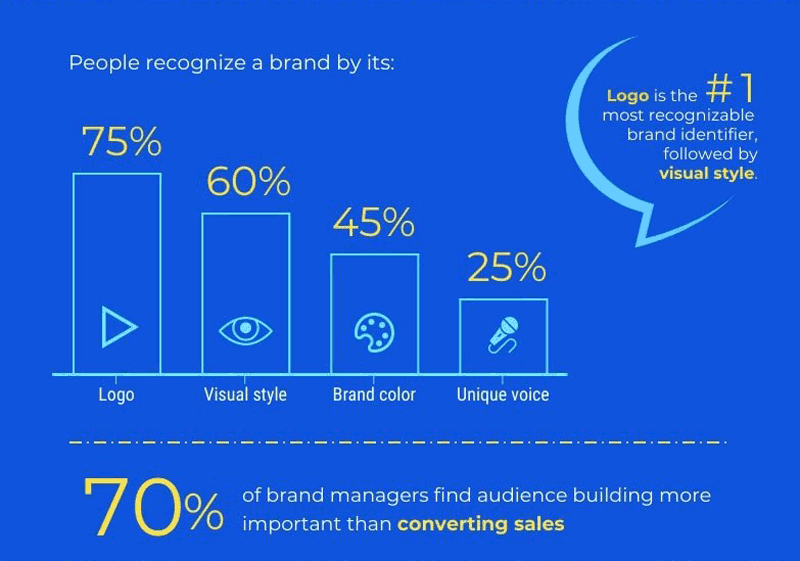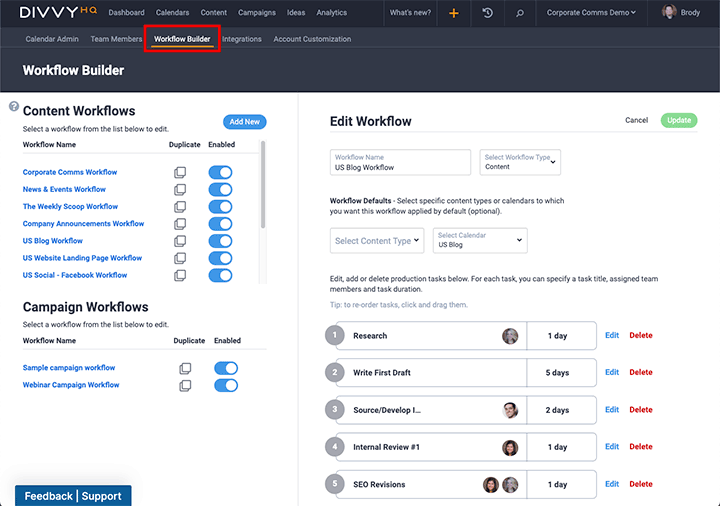Managing the content production process is an enormous task, especially for enterprise content operations. Working with numerous — often distributed — writers, editors, and graphic designers on getting an asset from ideation to publication is hard enough, let alone making sure each piece adequately reflects your brand.
However, getting your brand’s voice, image, and values right every time is critical. Maintaining branded content compliance has a positive impact, potentially boosting sales by as much as 33%, increasing customer loyalty, and improving customers’ perceptions of connection to and relationship with your brand.
Getting it wrong can harm your reputation and cost you conversions and customer loyalty.
Let’s talk about brand compliance and how to achieve it with every asset your team produces.
Understand Branded Content Compliance
To create brand-compliant content, your entire team needs to understand precisely what it is and how it looks. Brand compliance refers to the system you put in place to ensure content aligns with your brand’s:
- Voice, including tone and personality
- Visual look and feel — not just the logo, but also with the graphics you use, layout, and other design elements
- Messaging consistency, including conveying brand values
Your team needs to ensure these elements exist across platforms, devices, and geography. If your company does business globally, your audience should see content with the same branding, whether in Thailand, Germany, or the U.S.
Why Is Branded Content Compliance So Important?
Edelman’s 2022 Trust Barometer Report indicates that the global population generally perceives businesses as trustworthy, and 58% say that it’s important that a brand’s values and beliefs align with their own. Your audience needs to feel like it knows and understands your brand to trust it.
Building trust is one of the most important reasons to maintain consistency in brand compliance with every content piece you produce. While you need a product that provides a positive user experience, there is a connection between brand recognition and trust that your audience perceives through the content you publish. Other reasons include:
- Reducing confusion: Branded content compliance ensures you don’t send your audience mixed messages that result in confusion and uncertainty.
- Increasing brand recognition: A brand’s logo, visual style, color, and voice contribute to brand recognition.
- Guaranteeing quality: Content consistency simplifies quality control and makes it easier to produce high-quality content.
- Boosting the bottom line: Consumers who recognize and trust your brand are likelier to purchase and become loyal customers.
Internally, establishing branding guidelines for your content helps your team know what to expect and demonstrates to other departments that your team practices due diligence.
Image Source: RenderForest.com
Implement Measures To Ensure Brand Compliance
To ensure branded content compliance, you must implement measures establishing, monitoring, and evaluating asset compliance.
Identify Brand Standards
The first step is identifying brand standards for every type of asset. Criteria should include all the details your team needs to convey your brand’s message and voice in all assets.
Consider elements such as image, graphic, and text formatting (across channels) and styles; font styles and sizes; color palettes; logo use, including placement and size variations; and voice tone and message. While you want to leave room for creativity among your creatives, the more content elements you use to define expectations for branded content compliance, the easier it will be for your team to create content that matches expectations.
Create and Implement Style Guides
After you identify the standards, create, and implement a style guide for each type of content, including social media assets. Keep your guidelines simple but include all essential elements.
Writer AI is a platform that uses artificial intelligence to help with the writing process. It also has a great style guide builder that allows you to define the parameters for your writing team. Your style guide lives online, where all groups have immediate access and changes occur in real-time.
You may also want to include checklists, examples, and toolboxes to make it easier for your team to comply. Make sure everyone on your team knows about the guidelines and receives training on using and following them; this is especially important when new members join the team.
Use Technology To Assist in the Process
Technology can be your friend when it comes to branded content compliance. Using software that governs content production reduces the chances of your creatives inadvertently making a mistake.
For example, Writer AI monitors and coaches your writers as they create content, using the style guide to help direct suggestions. These features can be directly integrated within Divvy, alongside our asset repository, storing assets so you can call them up as needed.
Additionally, our software automatically updates content versions, so anyone who accesses an asset has the latest one. However, we also provide visibility to the entire lifecycle of every asset.
You can track who worked on it and what each person did. If there is an issue, you can trace its origin, helping you ensure branded content compliance and identify who needs additional training.
Screenshot: DivvyHQ’s Workflow Builder
Our workflow builder lets you create custom workflows, automating task assignments and content production schedules. As every team member checks off tasks upon completion, you can ensure that an asset moves through every stage of the process, including any branding quality control steps you implement.
Conduct Audits To Assess and Maintain Brand Compliance
Conducting content audits (we just heard you groan) is necessary to assess strategy effectiveness and content performance. They can also help you evaluate how well your team adheres to brand guidelines and messaging. Make sure your audit includes all content types and not just your website.
Including branding compliance in regularly scheduled audits ensures your content remains aligned over time. A system of checks helps you identify slipping branding consistency and quality before they become a big problem.
Divvy’s content audit template simplifies the audit process.
Use a Content Marketing Platform To Reduce Branded Content Compliance Chaos
Implementing guidelines and maintaining consistency across content types, platforms, and devices can result in chaos if you don’t have a streamlined system.
Never fear; Divvy has your back.
Our platform combines content and project management into one central hub. You can feel confident that when you implement branded content compliance measures, your entire team will have immediate access to the guidelines and tools they need to succeed. Request a demo to discover how we remove the chaos and streamline your brand compliance process.


